Safe Systems Programming Series II: Network Buffers in Rust
Network Buffers
In applications dealing with streaming data or network communication, efficiently managing incoming data is essential for maintaining performance and reliability. In order to achieve this we need a network buffer to handle variable-sized data chunks with ease.
This article will implement an UnorderedBuffer that meets the requirements to consume data from a UdpSocket:
let mut socket = std::net::UdpSocket;
let mut buffer = UnorderedBuffer<'_, '_>;
// Receive data into `UnorderedBuffer`
buffer.push_with(MTU, |mut view: PushView<'_, 's>| {
// Handle fallible operations during push operation
let written = socket.recv(view.data_mut())?;
// Handle unknown insertion length
view.set_length(written as u32);
Ok(())
});Recall the requirements for a network buffer:
- Store network bytes within the same memory allocation
- Packet length is unknown in advance
- Packet receive is fallible
In network programming, managing data packets that arrive out of sequence is a frequent challenge, especially with protocols like UDP where delivery order is not guaranteed.
In future articles we will extend the current framework to implement an
OrderedBufferthat can effectively buffer and reorder sequenced UDP traffic.
Network Buffers in Linux
In the Linux networking stack, the sk_buff (socket buffer) is the cornerstone data structure for managing network packets. It serves as a container for both the packet data and the metadata required to process and transport the packet across the network layers.
sk_buff is composed from two primary components:
- Metadata buffer: This structure is a linked list of metadata elements that index into the data buffer.
- Data buffer: Separate memory region that stores actual packet data managed as a ring buffer.
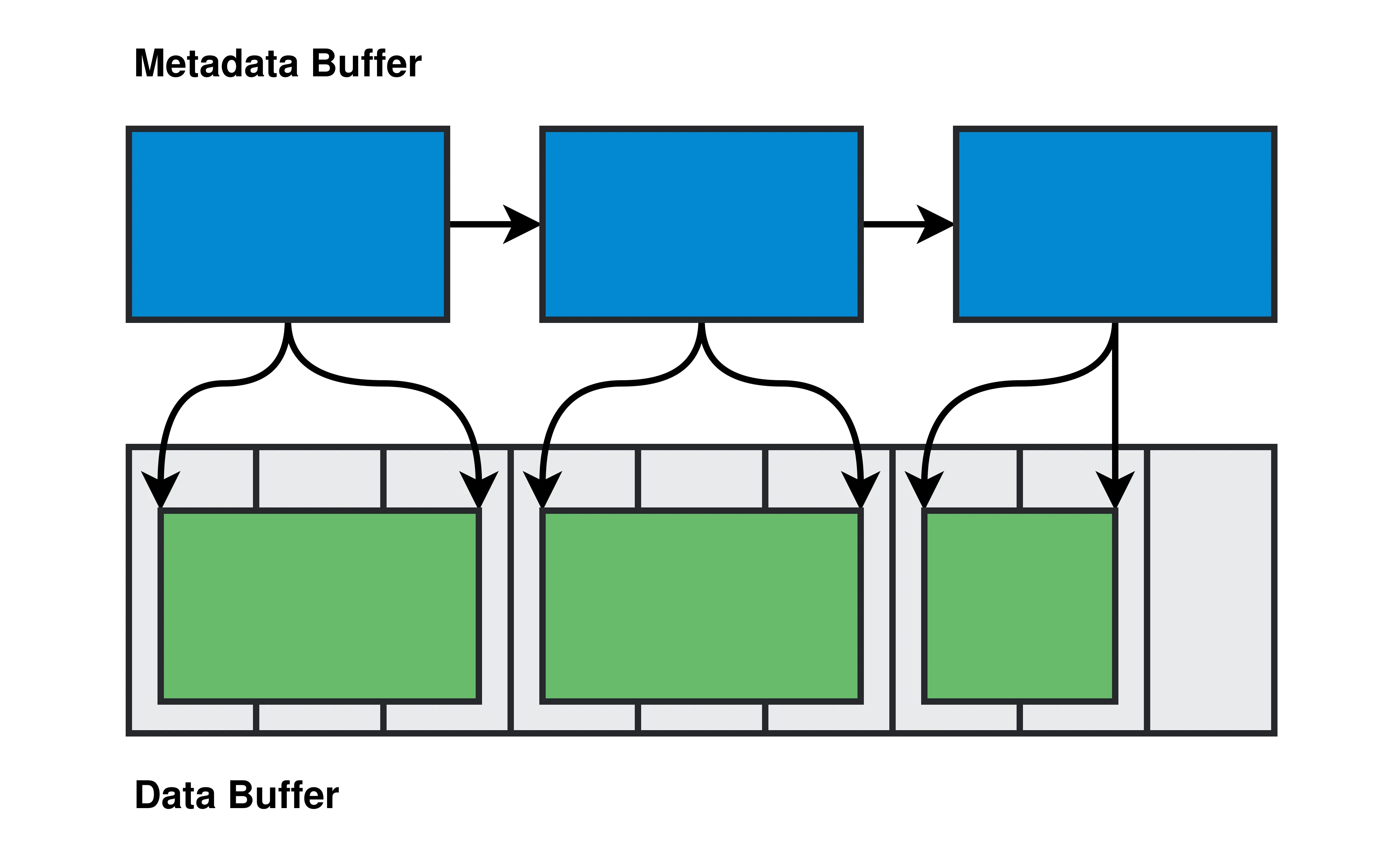
In this article we will be implementing the metadata buffer as a ring buffer since we do not have a requirement to be able to re-order packets.
If you are interested in an in-depth explanation about how
sk_buffworks then the Linux kernel docs are a good starting point:
Metadata Buffers
Metadata buffers are used to track package location and length within the data buffer. UnorderedMetadataBuffer is implemented using a ring buffer, Ring, since we require constant-time insertion and removal operations. Ring buffers also have better memory locality than linked lists.
/// Metadata for unordered network packets
pub struct UnorderedMetadata {
storage_index: u32,
storage_length: u32,
}
/// [`UnorderedMetadataBuffer`] that stores [`UnorderedMetadata`]
pub struct UnorderedMetadataBuffer<'m> {
ring: Ring<'m, UnorderedMetadata>,
}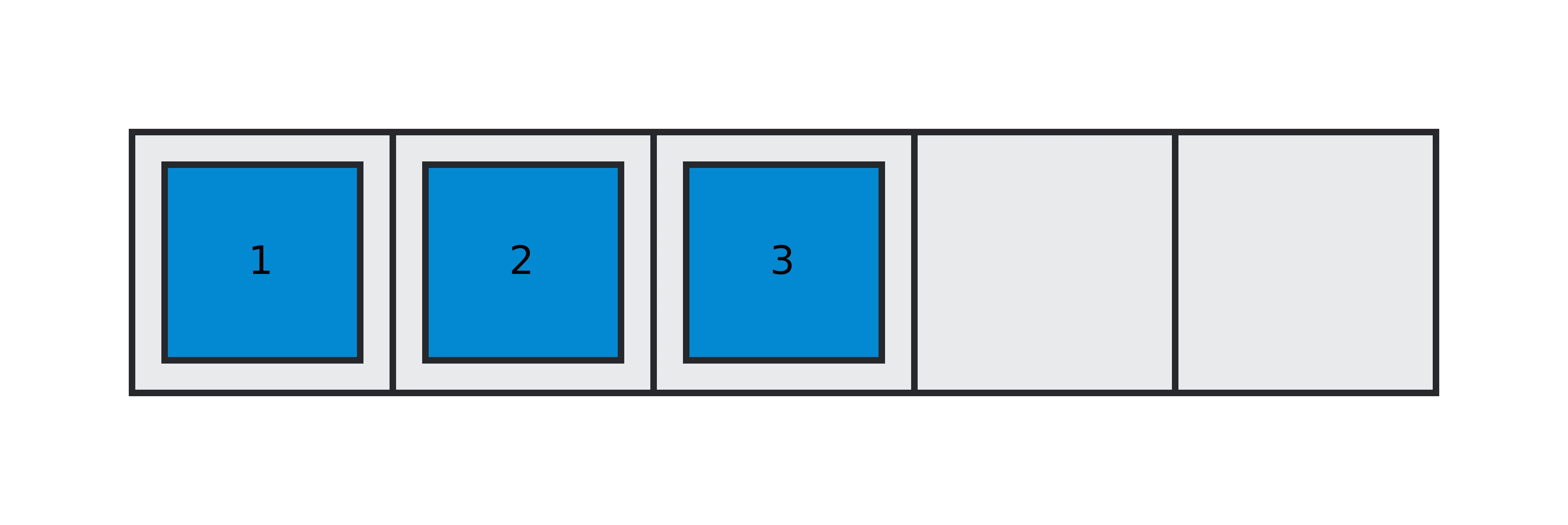
If you want to learn more about how ring buffers work and how to implement them, read the previous article in this series:
Unordered Buffer
An unordered buffer is implemented as a combination of a metadata buffer and data buffer. This section will explore the algorithm used to allocate and deallocate packet data.
pub struct OrderedBuffer<'m, 's> {
receive_ring: OrderedMetadataBuffer<'m>,
storage_ring: Ring<'s, u8>,
}Allocating Packet Data
Allocating packet data is a three-phase procedure:
- Ensure that we have enough space in the data buffer to allocate a packet with maximum data size
- Allocate packet into data buffer
- Allocate metadata entry into metadata buffer
Consider an example with one packet already allocated:
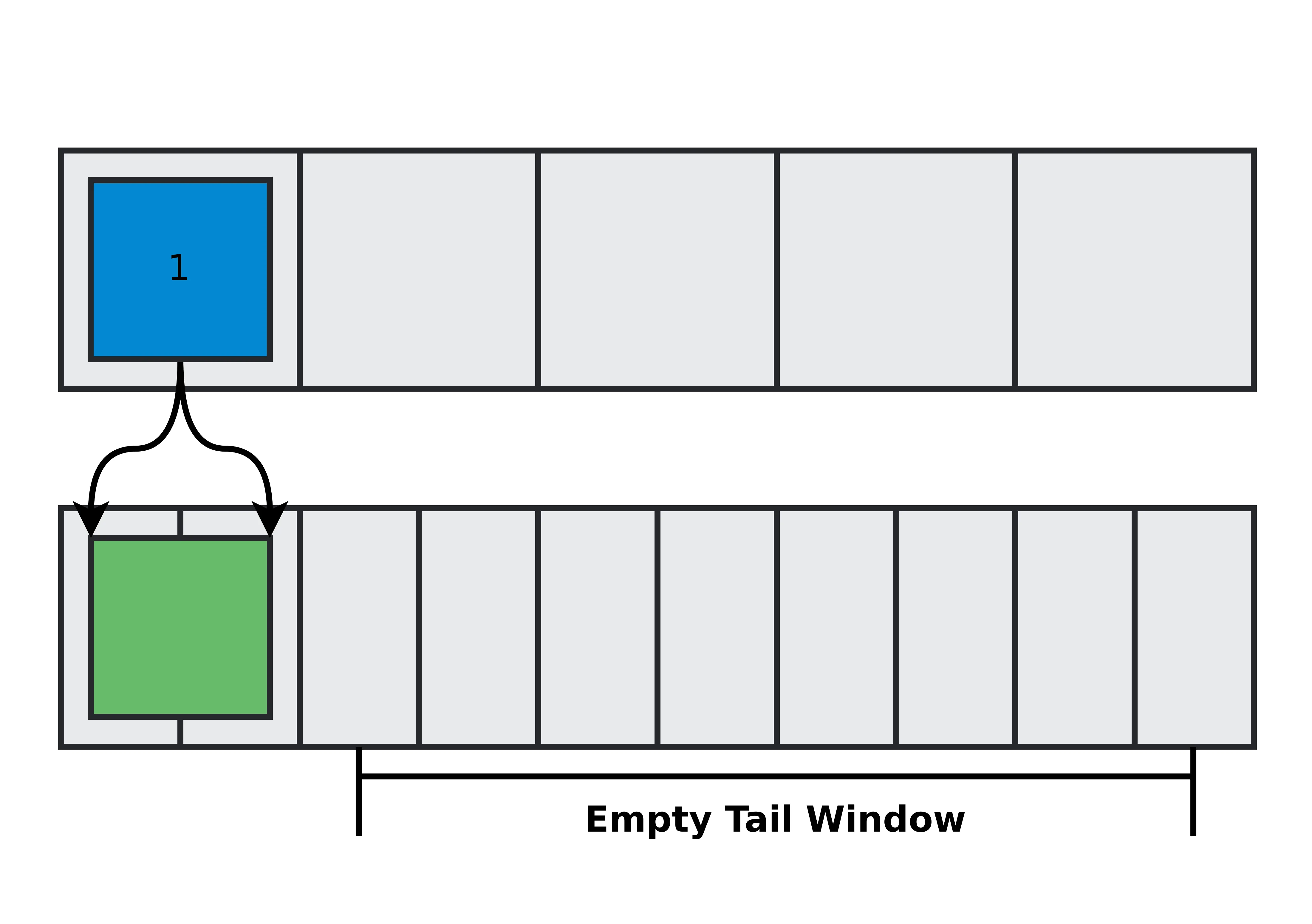
We initially preallocate an area of the buffer that corresponds to the maximum data size:
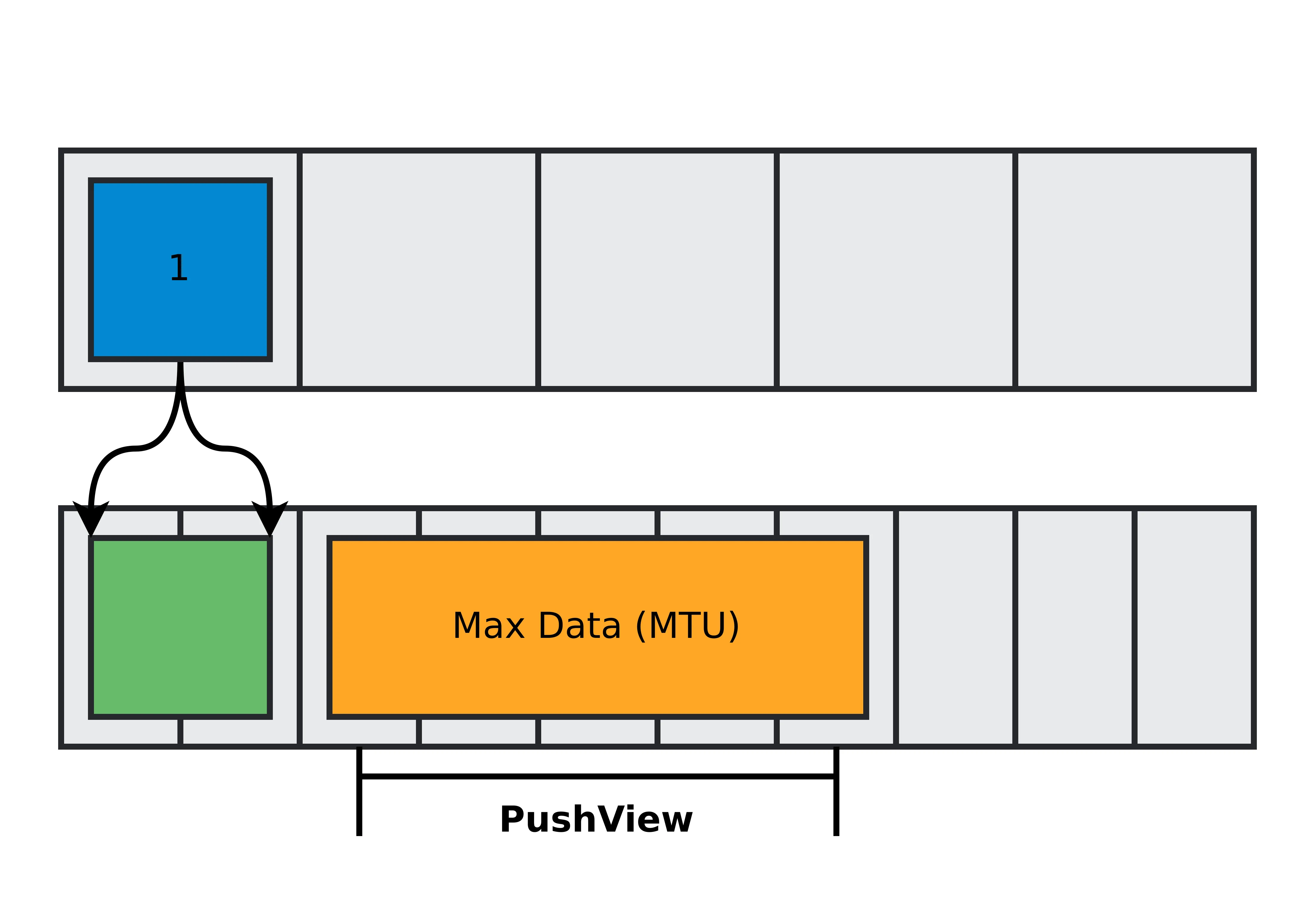
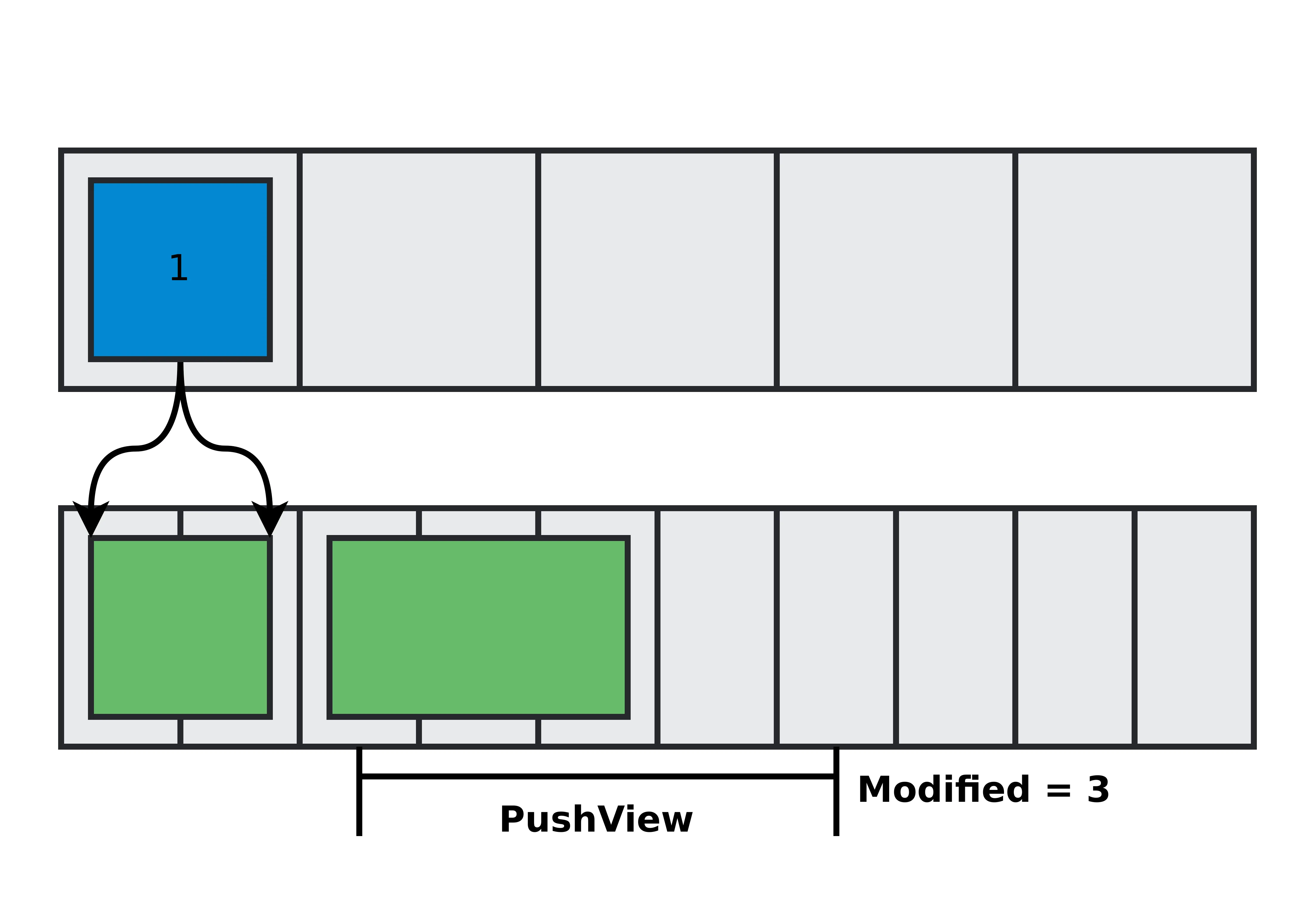
Commit the allocation to the metadata buffer:
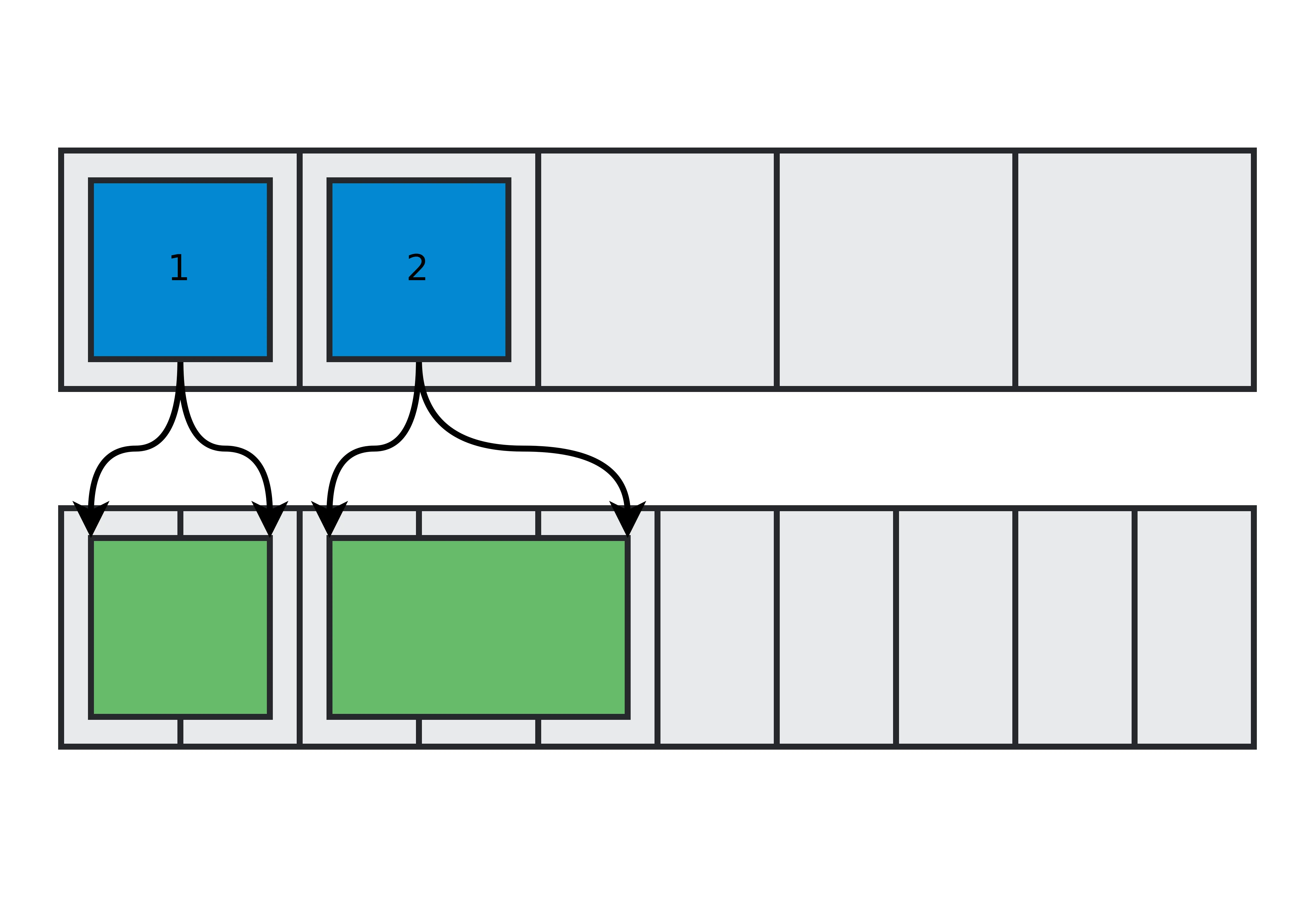
Implementing UnorderedBuffer::push_with based on this logic:
impl<'s> UnorderedBuffer<'_, 's> {
/// Push data into receive buffer of [`UnorderedBuffer`]
pub fn push_with<R, F>(&mut self, max_size: u32, f: F) -> Result<R, std::io::Error>
where
F: FnOnce(PushView<'_, 's>) -> Result<R, std::io::Error>,
{
let tail_window = self.storage_ring.empty_tail_window();
// Check if max size will fit in ring tail
if tail_window >= max_size {
self.push_with_inner(f)
} else {
Err(ErrorKind::WouldBlock.into())
}
}
}We also implement UnorderedBuffer::push_with_inner which allocates metadata conditional on the storage allocation succeeding:
impl<'s> UnorderedBuffer<'_, 's> {
fn push_with_inner<R, F>(&mut self, f: F) -> Result<R, std::io::Error>
where
F: FnOnce(PushView<'_, 's>) -> Result<R, std::io::Error>,
{
// Allocate metadata conditional on storage allocation succeeding
self.receive_ring.push_with(|metadata: &mut UnorderedMetadata| {
// Allocate message in storage
self.storage_ring.push_many_with(|view: &mut RingManyMutView<'_, 's, u8>| {
metadata.set_index(view.index());
let res = f(PushView { metadata, view })?;
Ok(res)
})
})
}
}During the allocation process we make use of
PushView.PushViewis a temporary view into the buffer that allows the caller to communicate information about packet length back to the buffer.pub struct PushView<'a, 's> { metadata: &'a mut UnorderedMetadata, view: RingManyMutView<'a, 's, u8>, }impl PushView<'_, '_> { /// Set length of written data pub fn set_length(&mut self, len: u32) -> &mut Self { self.metadata.set_length(len); self.view.set_modified(len); self } }Recall the usage example of
UnorderedBuffer::push_with:buffer.push_with(MTU, |mut view: PushView<'_, 's>| { let written = socket.recv(view.data_mut())?; view.set_length(written as u32); Ok(()) });If you are interested more about views or the implementation of
RingManyMutView, read the previous article in this series:
Deallocating Packet Data
Deallocating packet data is comparatively simpler:
- Deallocate metadata element tracking how many bytes need to be deallocated from the data buffer
- Deallocate bytes from data buffer
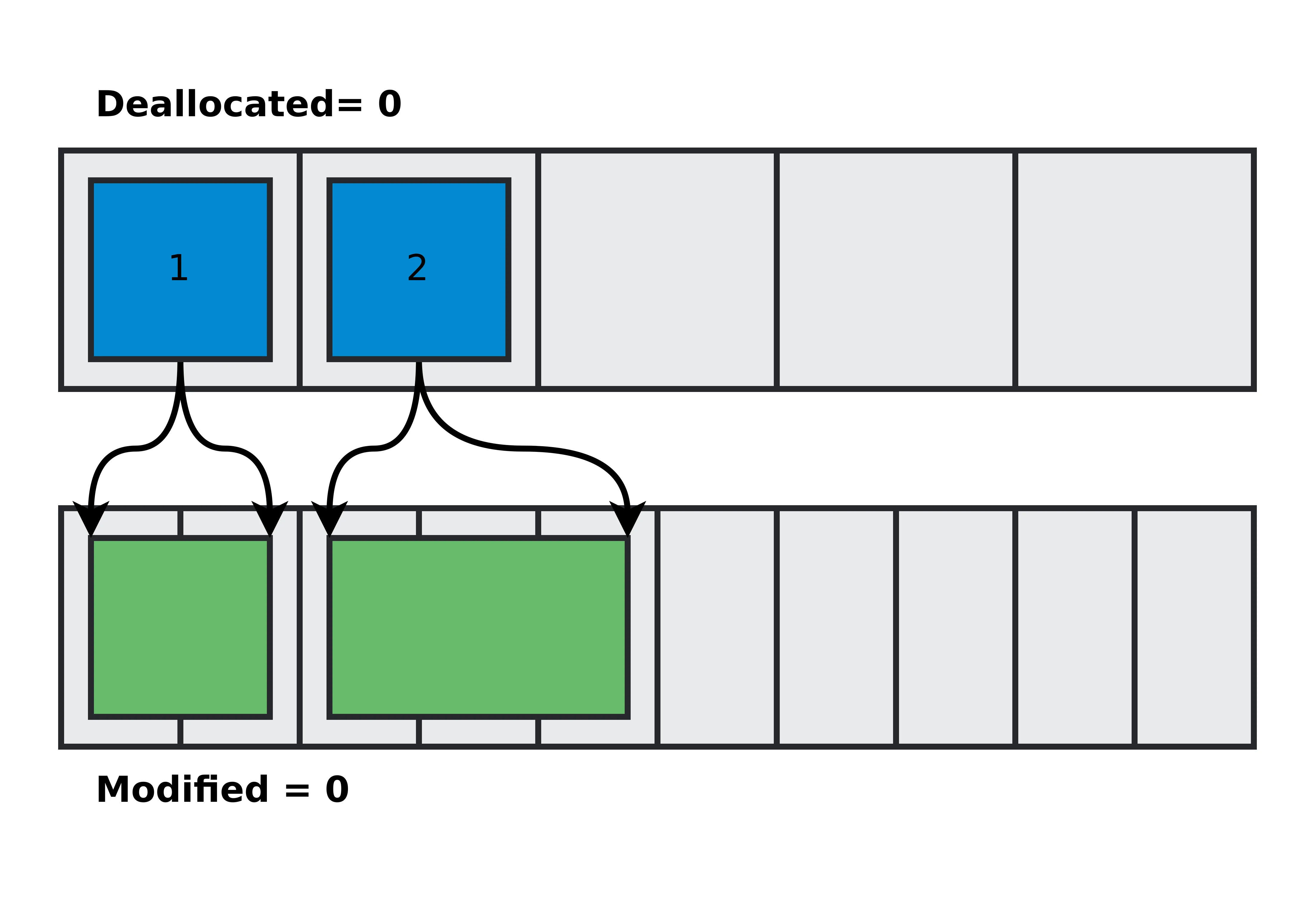
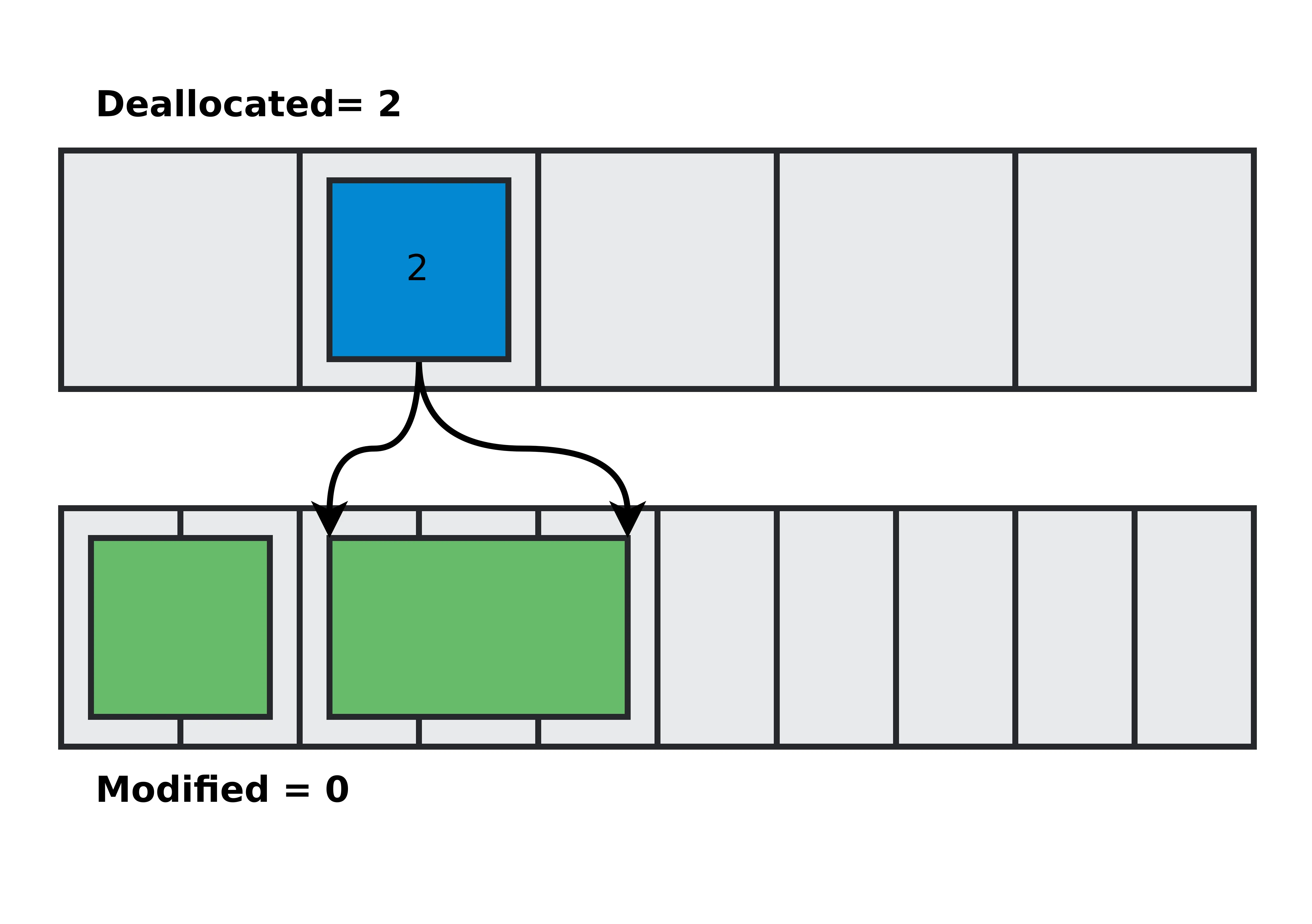
We can implement the metadata deallocation using UnorderedMetadataBuffer::pop_with:
impl UnorderedMetadataBuffer<'_> {
/// Pop next metadata from [`UnorderedMetadataBuffer`]
pub fn pop_with<R, F>(&mut self, deallocated: &mut u32, f: F) -> Option<R>
where
F: FnOnce(&UnorderedMetadata) -> Option<R>,
{
self.ring.pop_with(|m| {
let data = m.data();
let res = f(data)?;
*deallocated = data.storage_length + data.storage_padding;
Some(res)
})
}
}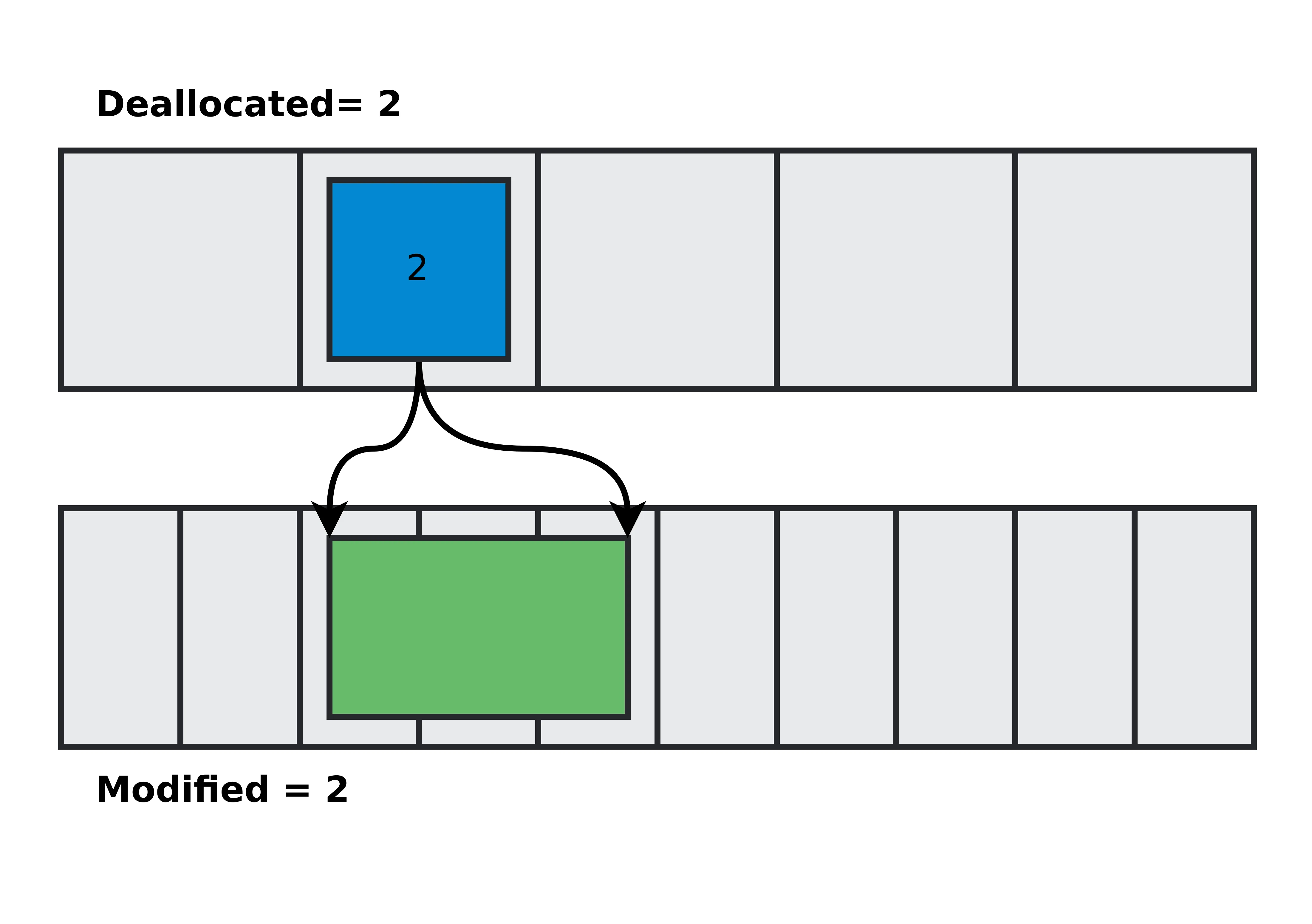
Finally implementing UnorderedBuffer::pop_with:
impl UnorderedBuffer<'_, '_> {
/// Pop data from receive buffer of [`UnorderedBuffer`]
pub fn pop_with<R, F>(&mut self, f: F) -> Option<R>
where
F: FnOnce(&[u8]) -> Option<R>,
{
// Remove metadata conditional on storage removal succeeding
let deallocated = &mut 0;
let res = self.receive_ring.pop_with(deallocated, |m| {
// SAFE: `storage_index` is a valid index into the storage buffer
let data = self.storage_ring.get_many(m.index(), m.length()).unwrap();
f(data)
})?;
// SAFE: `deallocated` does not exceeed the length of the storage buffer
self.storage_ring.truncate_many_head(*deallocated).unwrap();
Some(res)
}
}Padding Packet Data
The keen readers may have noticed that we must also handle the case where there is not enough space in the tail of the buffer to allocate a packet.
In this case we must pad the last element in the data buffer such that the buffer will wrap and the next allocation occurs at the head.
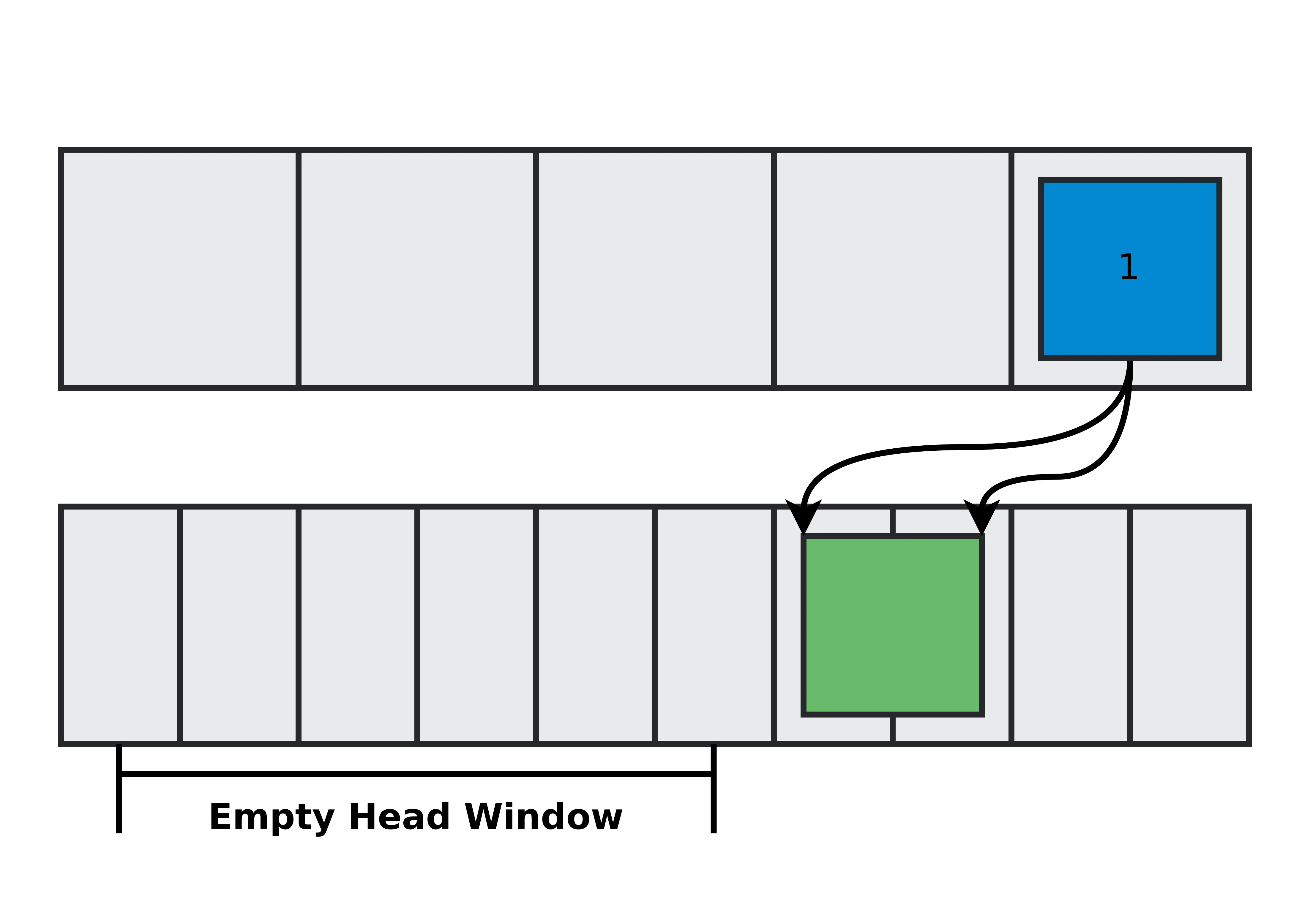
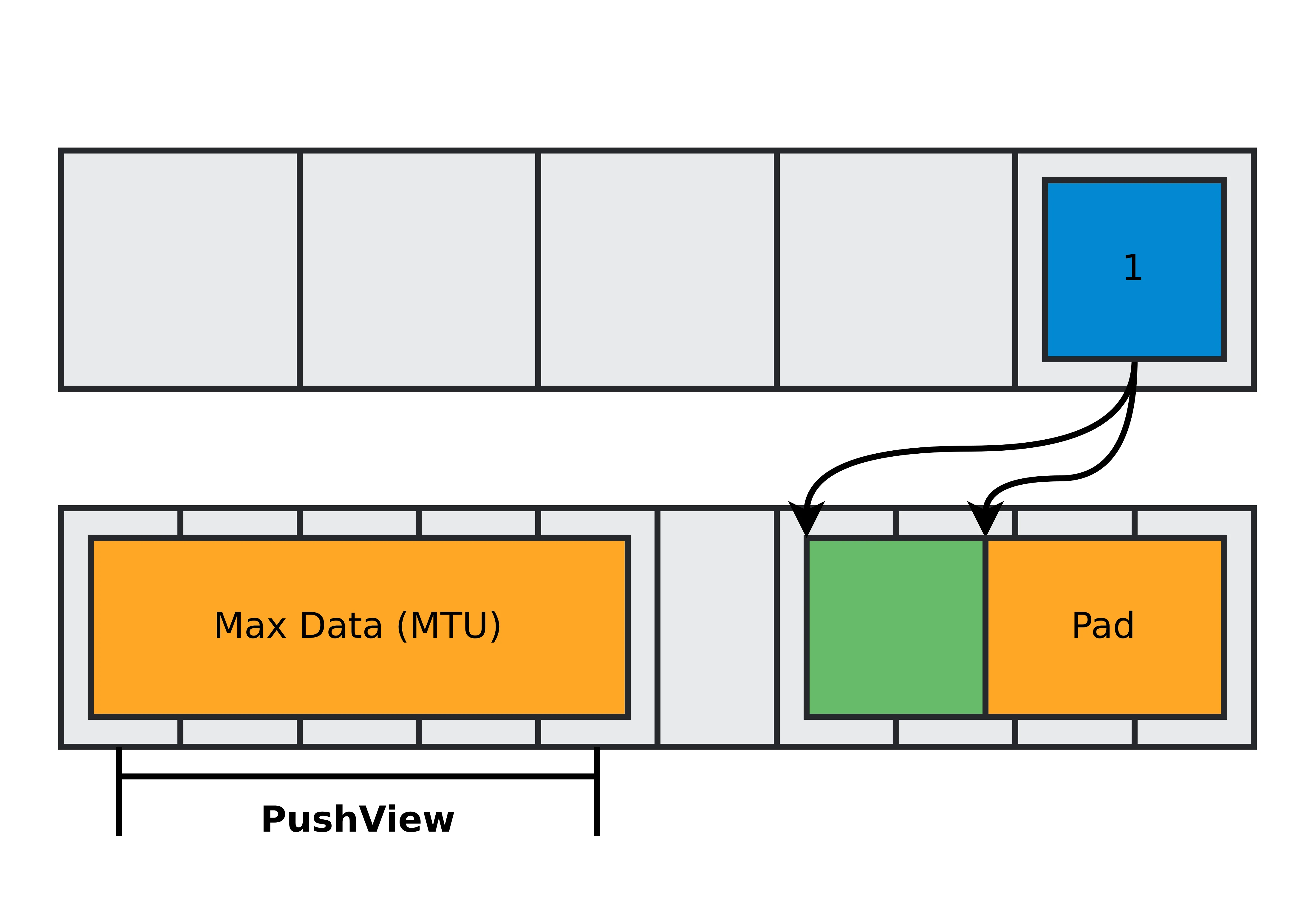
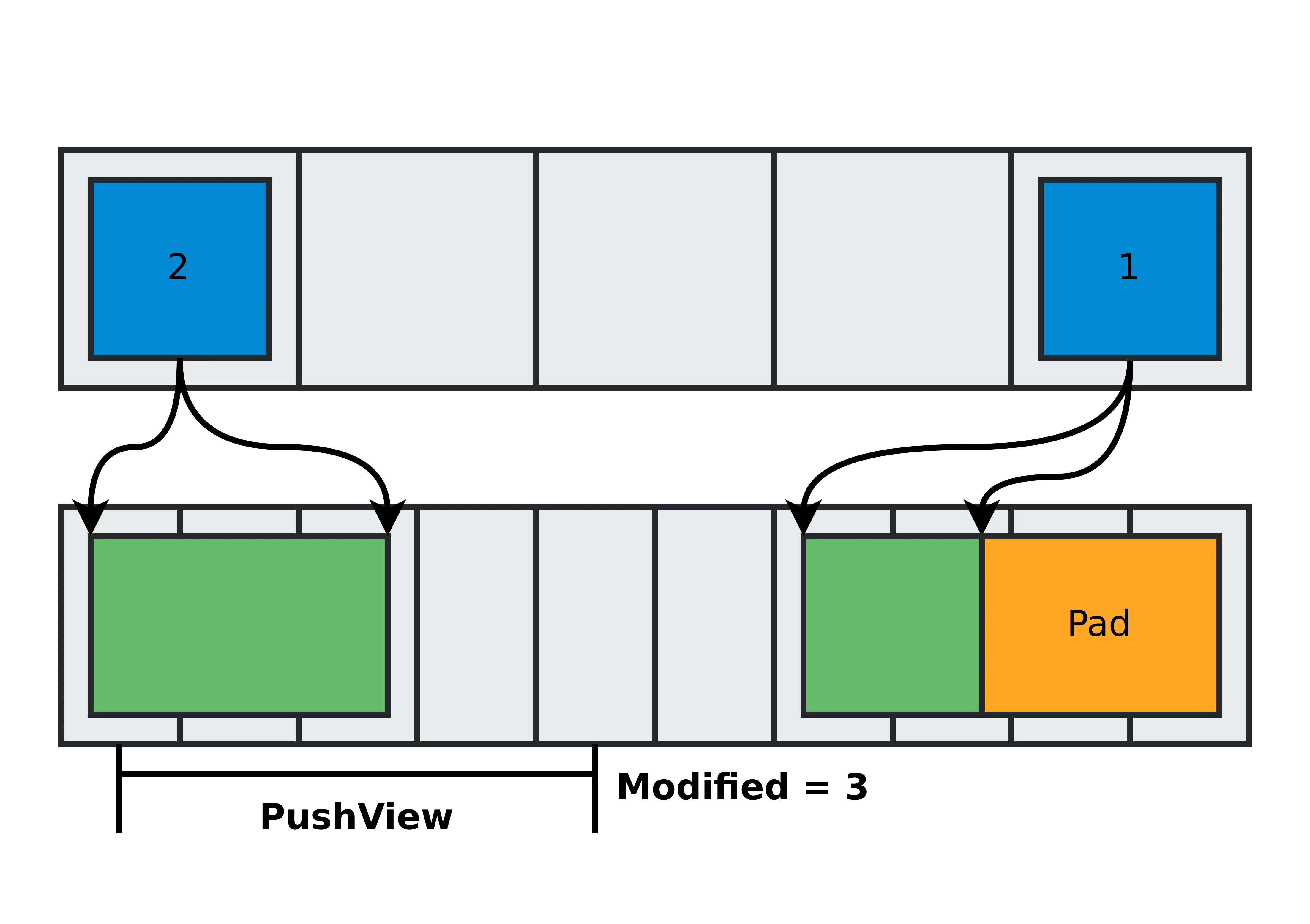
Adding this logic to our implementation of UnorderedBuffer::push_with:
impl<'s> UnorderedBuffer<'_, 's> {
/// Push data into receive buffer of [`UnorderedBuffer`]
pub fn push_with<R, F>(&mut self, max_size: u32, f: F) -> Result<R, std::io::Error>
where
F: FnOnce(PushView<'_, 's>) -> Result<R, std::io::Error>,
{
let tail_window = self.storage_ring.empty_tail_window();
let head_window = self.storage_ring.window() - tail_window;
// Check if max size will fit in ring tail
if tail_window >= max_size {
self.push_with_inner(f)
// Check if max size will fit in ring head
} else if head_window >= max_size {
// Pad the tail window
self.storage_ring.push_many(tail_window)?;
// Add padding to last metadata element if it exists
if !self.receive_ring.is_empty() {
let last_metadata_index = self.receive_ring.last();
// SAFE: Buffer is non-empty therefore the last element exists
let last_metadata = self.receive_ring.get_mut(last_metadata_index).unwrap();
last_metadata.pad(tail_window);
}
// Do not undo the tail padding in the case of failure since `max_size` is not
// expected to change during runtime as it is often hardware dependent.
let res = self.push_with_inner(f)?;
Ok(res)
} else {
Err(ErrorKind::WouldBlock.into())
}
}
}In order to track the padding that was applied to the packet we must add a third field to
UnorderedMetadata:pub struct UnorderedMetadata { storage_index: u32, storage_length: u32, storage_padding: u32, }impl UnorderedMetadata { /// Pad [`UnorderedMetadata`] element with empty padding pub fn pad(&mut self, padding: u32) -> &mut Self { self.storage_padding += padding; self } }
Conclusion
In this article, we’ve implemented an UnorderedBuffer in Rust to efficiently manage network data, particularly for UDP network sockets. By utilizing ring buffers for both metadata and packet storage, the design ensures constant-time operations and excellent memory locality.
The design utilizies zero-cost programming practices to create an abstract API that is easy to reason about in the presence of fallible operations.
This article paves the way for our next article where we will implement an OrderedBuffer to reorder sequenced network traffic, further enhancing our capability for network processing.




